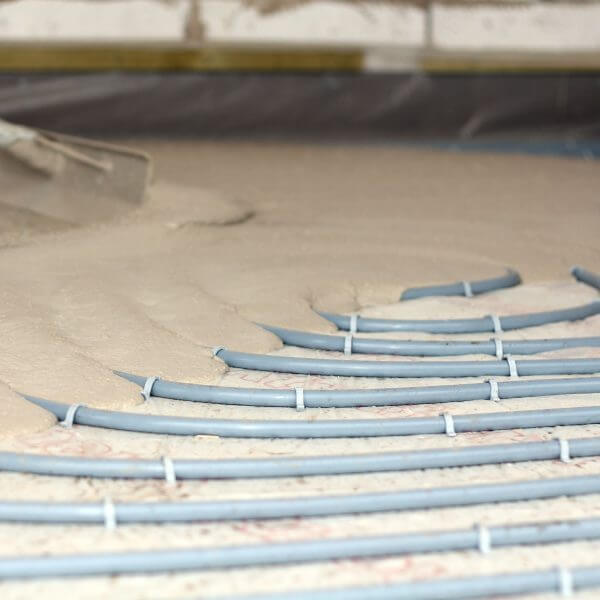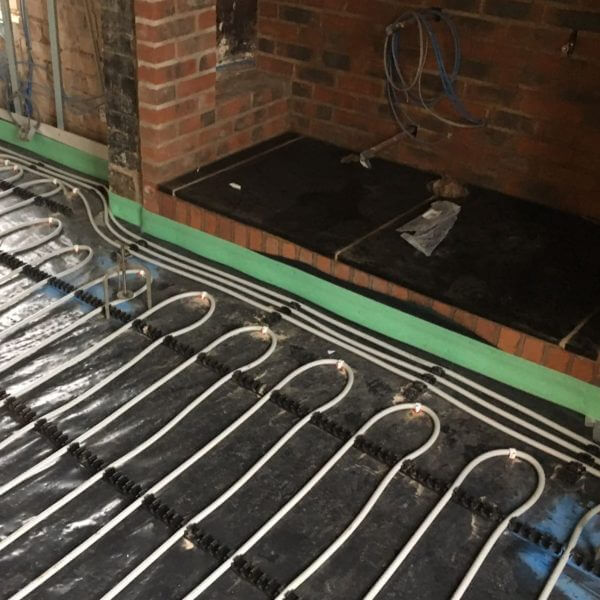Drying Liquid Screed
Following installation, EasyFlow liquid screeds should be provided with protection from rapid drying or draughts for the first 48 to 72 hours. Thereafter the environment should be kept warm and as well ventilated as possible to encourage the drying process. Do not cover the screed with polythene.
Storage of materials on the screed’s surface, accidental exposure to water, humid or cold environments will delay drying.
Four factors should be considered when drying:-
• Room Temperature – Increasing the room temperature will assist the screed to dry through improved evaporation
• Relative Humidity (RH) – It is important to provide good ventilation to ensure that a low RH is achieved
• Screed Temperature – Underfloor heating can be commissioned (heating & cooling procedure) at 7 days, this raises the vapour pressure thus greatly improving the drying characteristics of the screed. This should be combined with ventilation
• Moisture Ingress – EasyFlow liquid screed should be protected from moisture ingress to prevent rehydration which will delay the drying process
LIQUID SCREED DRYING TIME
Under good drying conditions liquid screeds dry at a rate of 1mm per day up to a thickness of 40mm and then at a rate of ½ mm per day for thicknesses above this:-
Example: 50mm EasyFlow liquid screed drying time: (40mm @ 1 day) + (10mm @ 2 days) = 60 Days
*The above example is for guidance only and will be dependent on individual site conditions.
Drying times can be reduced by the provision of good ventilation (dehumidifiers), removal of laitance, and by force drying of the screed using underfloor heating.
ASSISTED DRYING
Dehumidifiers can be used as early as 72 hours after the installation of EasyFlow liquid screed to assist with drying. It is important that a closed system is employed to ensure that any moisture extracted from the environment during operation is removed. Any water collected should be removed regularly.
FORCE DRYING
Since gypsum screeds are based on calcium sulphate and not cement they can be force dried to reduce drying times with effecting strength gain or causing large amounts of shrinkage.
Force drying of EasyFlow liquid screed can begin as early as 7 days following installation of the screed by various methods;
Commissioning of Underfloor Heating Systems – UFH should be commissioned at ambient floor temperatures. (Approximately 18 degrees or lowest manifold temperature). This temperature should be maintained for 24 hours then raised by up to 5 degrees every 24 hours thereafter until the optimum running temperature is reached (to a maximum of 50 degrees). This should then be maintained for 7 days prior to the temperature being reduced by 5 degrees per day back to the starting point. The system should be turned off and allowed to cool for 48 hours prior to moisture testing by digital hygrometer.
Space Heaters & Dehumidifiers in Combination – Can be used after 72 hours. Fossil fuel fired heaters (e.g. gas heaters) must be avoided as they will raise humidity.
IMPORTANT: After drying the screed, the residual moisture content must be determined using either digital/hair hygrometer, carbide bomb or oven test.
*NB: Drying of screeds can be greatly influenced by individual site conditions.




